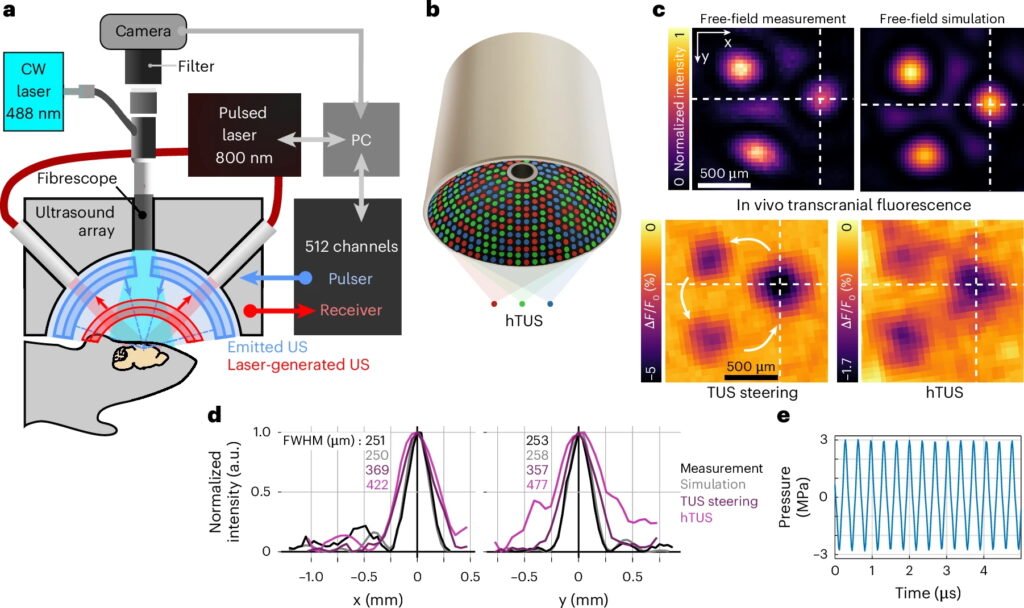Scientists at NYU Langone and ETH Zurich have developed a remarkable new method for stimulating specific brain circuits using sound—shaped not just into waves, but into actual holograms. Their device looks a bit like a helmet and contains 512 ultrasound emitters, which fire in sync to form complex patterns like triangles or pentagons. These geometric holograms travel through the skull and target precise brain networks without requiring any surgery or implants, marking a major advance in noninvasive brain therapy.
The technique is called transcranial ultrasound stimulation (TUS), and it works by sending gentle sound pulses into the brain that activate clusters of neurons. But here’s the twist: the stimulation is significantly more effective when aimed at entire networks of interconnected brain cells, rather than isolated neurons. In these cases, neurons became up to ten times more sensitive to the sound waves, which allowed the team to dramatically lower the intensity needed—making the approach safer and less disruptive to surrounding tissue.
This is a notable improvement over older, more intense ultrasound therapies currently used for treating conditions like Parkinson’s disease, which can sometimes cause damage. By harnessing lower-power ultrasound and focusing it into geometrically shaped patterns, the new system achieves activation with far greater precision and minimal risk.
To confirm the technique was working, researchers included a visualization system that uses fluorescent calcium signals. When the neurons respond to the sound patterns, they glow in real time—sort of like watching the brain light up under a microscopic spotlight. This immediate feedback helped the scientists track which areas were activated and how well the sound waves penetrated.
The researchers are especially excited about the flexibility of the system. Because the patterns are generated by software, they can reconfigure them on the fly, targeting different brain regions without moving the device. This could one day lead to customized brain stimulation therapies where clinicians adjust treatment settings instantly based on patient needs—no surgical adjustments required.
Though the study was conducted in live animals, the long-term goal is to use this technology to help people. By stimulating deep brain areas and complex neural circuits noninvasively, it could eventually support treatments for mental health disorders, memory issues, and neurological conditions like epilepsy.
Press Release: New Technique Uses Focused Sound Waves and Holograms to Control Brain Circuits
Abstract in Nature Biomedical Engineering: Holographic transcranial ultrasound neuromodulation enhances stimulation efficacy by cooperatively recruiting distributed brain circuits

